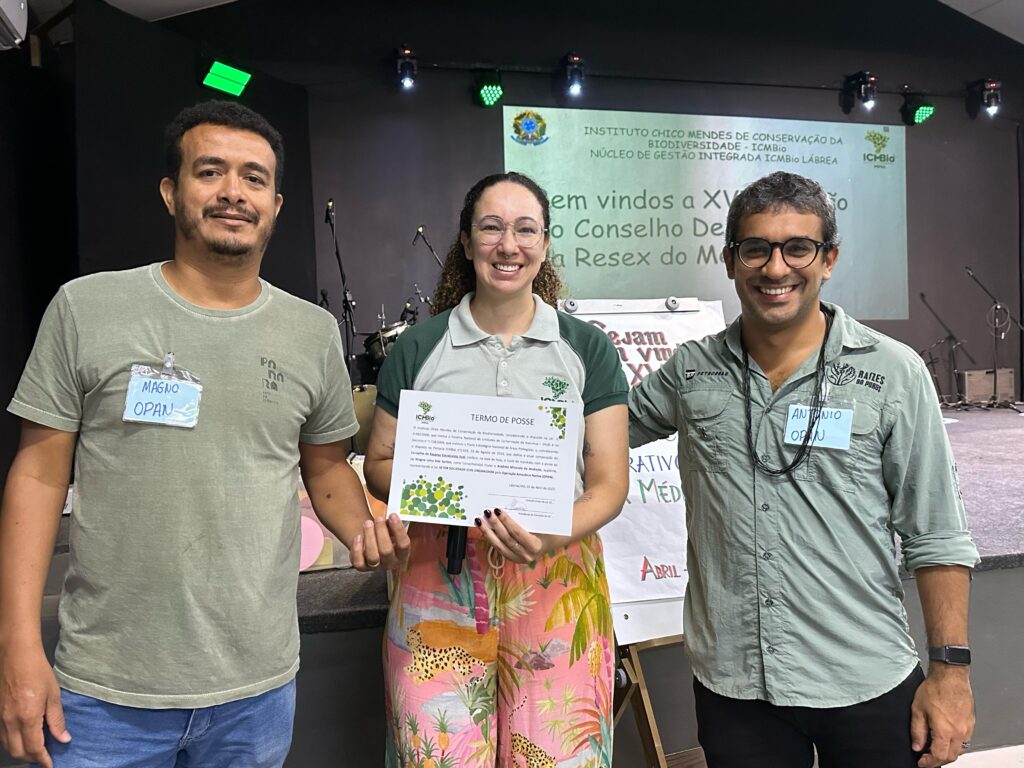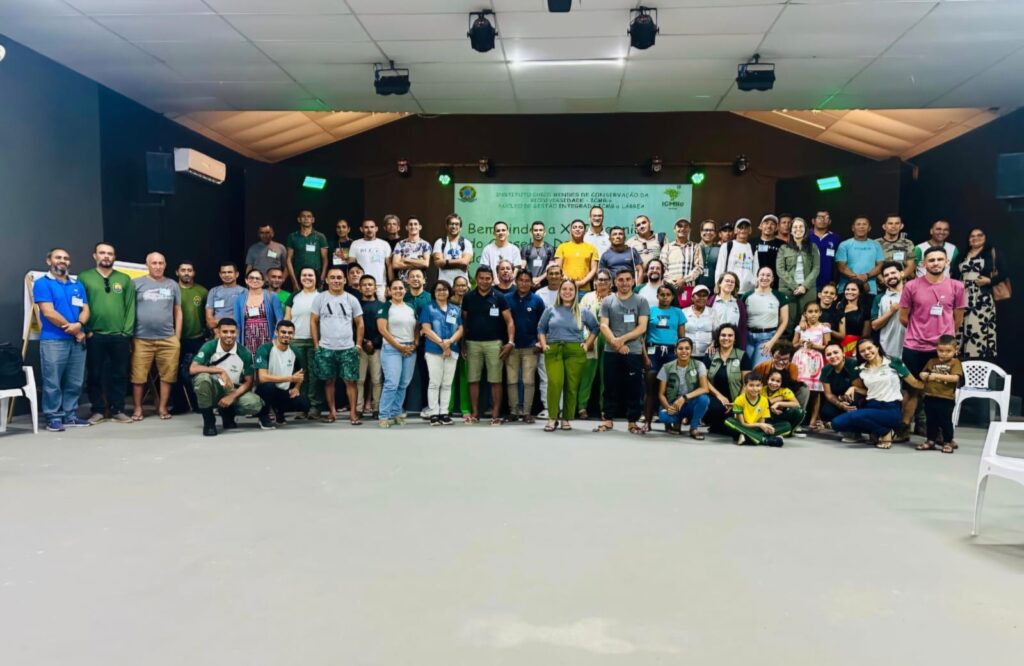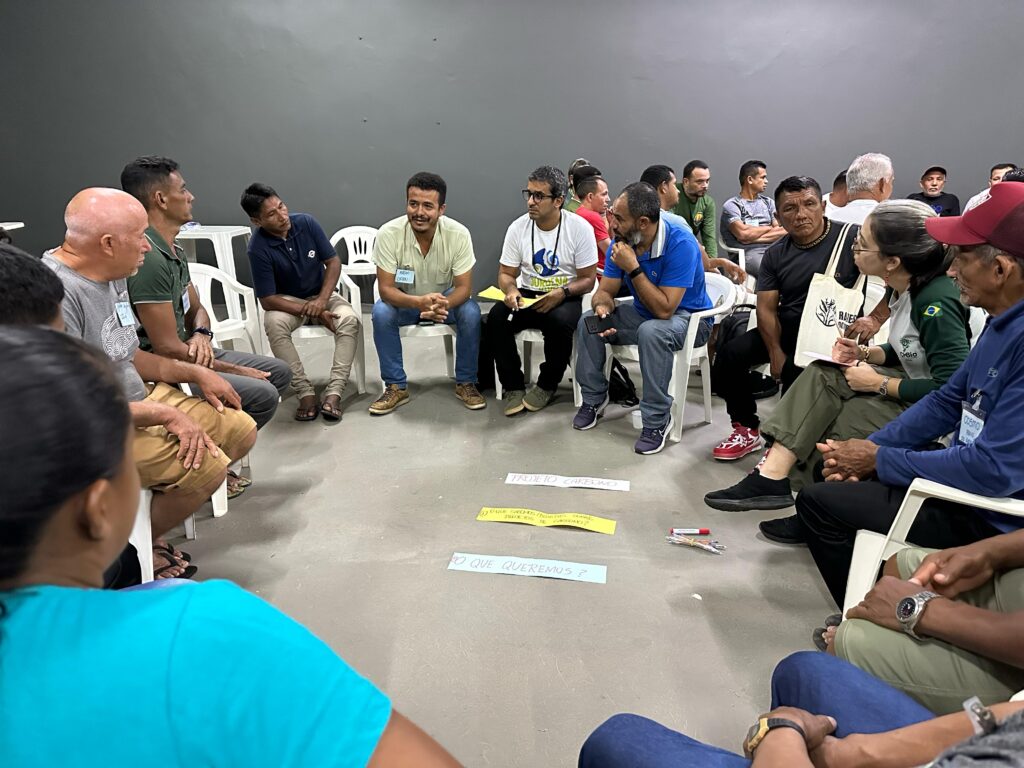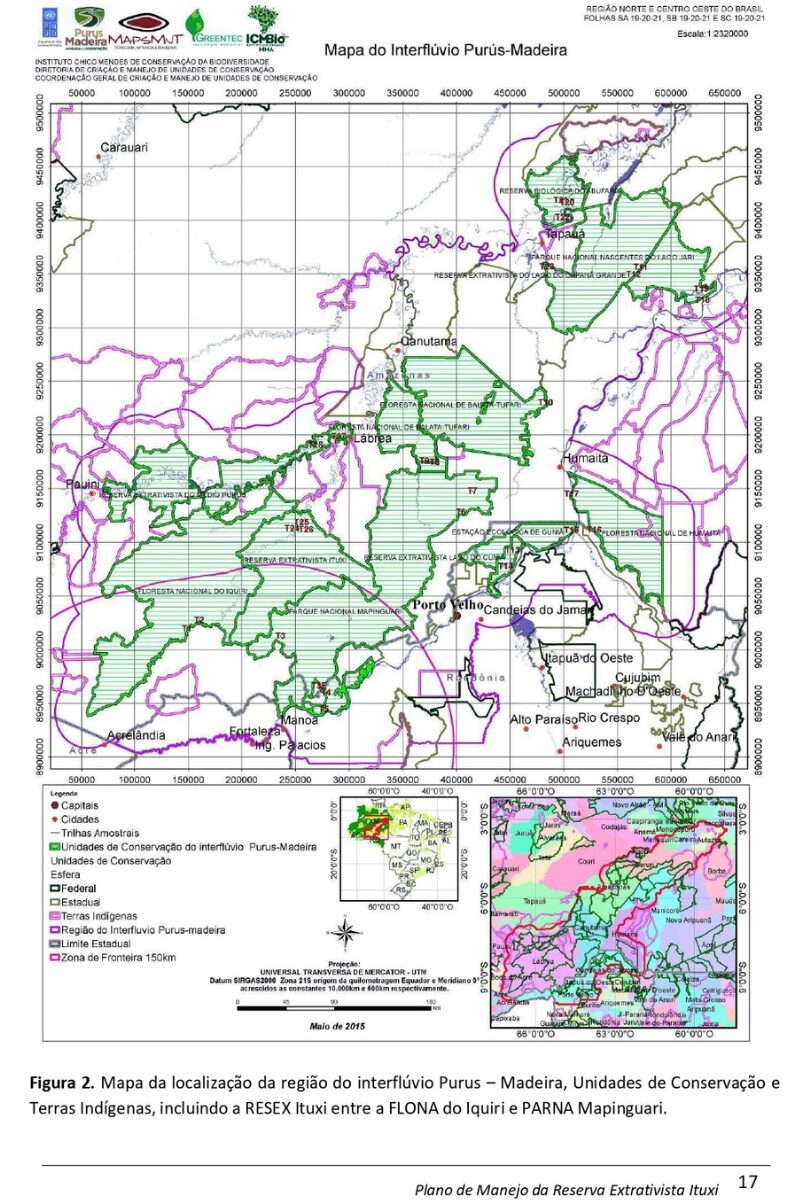OPAN takes seat on the board of directors of the Resex Médio Purus
The organization also became a member of the chambers of the techniques of the indigenous peoples of the isolated and conflict management
AI generated audio
By Talita Oliveira | OPAN
The Operação Amazônia Nativa (OPAN) is now a part of the Advisory Board of the Extractive Reserve (Resex) in the Average State. The inauguration took place during the SIXTEENTH Regular Meeting of the Board in the 3rd and 4th of April, Lábrea (AM), and in the presence of the representatives of the Instituto Chico Mendes de Conservação da Biodiversidade (ICMBio), traditional communities, associations, public agencies, government bodies, the private sector, and civil society.
The Resex) was created in 2008 following a collaborative process with public hearings by the OPAN, that is from the beginning he supported the creation of a Conservation Unit (CU). “It is really important that we have a group of indigenous lands and protected areas in the context of the mosaic, in order to strengthen the conservation of the territory and to bring about more safety,” says the Great of the Saints, for the indigenous people, and the holder on to the board to represent the OPAN.

In addition to the seat on the council for three years, 2025-2027, the OPAN became a member of the chambers of the techniques of the indigenous peoples of the isolated and conflict — spaces of constant analysis, and propose a technique that will substantiate the decisions of the board.
“Our whole look comes up a lot in that direction to bring the full potential of those areas that converge on the role of indigenous communities in the course of the middle Purus river, and also the importance of having a care in the relations with the indigenous peoples in isolation. We walked into the chambers of techniques in order to contribute strategically to the discussion,” says Antonio Miranda, indigenous peoples, and an alternate on the board to represent the OPAN.
Topics to be discussed
In addition to the inauguration of the new board members, the meeting is brought to the forefront in discussions that are relevant to managing the Resex. One of the topics was conducted by the Association of Workers ‘ Agroextrativistas of the Middle Purus river (Atamp), which has representation on the board, and it comes to the possibility of the implementation of the project-based carbon credits in the conservation area, and in the light of the recent enactment of the Law, 15.042. The new law on the Brazilian System of Emissions Trading for Greenhouse Gases (SBCE) to establish guidelines for the regulation of the carbon market in the country.

Another important issue discussed by the board, was a link between the communities in the extractive industries and indigenous peoples, who live in the vicinity of the Resex, especially in the area of overlap. In the case of the Area of the Restriction of the Use of the Mamoriá where there is the presence of the indigenous peoples in isolation. The decree that established the restriction was released on December 11, 2024, and has an overlap of approximately 20% of the Resex Médio Purus.
During the meeting, it was also referred to the incident that occurred in February of this year, when an indian, isolated in the region of the Mamoriá the Great was a volunteer with a community of waterfront on the banks of the Purus river, about five miles from the Base of the Protection of ethno-environmental Mamoriá Great. The situation continues to be monitored by the National Foundation for Indigenous Peoples (Funai), who was also present at the meeting and shared information about the actions of the monitoring and of the expeditions carried out in the area.

The meeting was also attended by representatives of the people, Jamamadi, who shared information about the arrangement of the living, which is being built in collaboration with Funai, the ICMBio, and communities in the extractive industries in the region of the Mamoriazinho. Abbeys, Jamamadi, the chief of the general, and Joel the Jamamadi, the leader of the village, Sticks, and Vandi Jamamadi also commented on the use of the traditional and the ancestor of the Apaã, highlighting the importance of cultural and local to the area for its people.
The Resex Médio Purus and the diversity of the Interfluvial of the Purus-Madeira
The Resex Médio Purus cover 604.231 acres, the greater part of its extent When, even reaching the cities of Pauini, and Tapauá. Its territory borders on 11 acres of indigenous peoples Apurinã, Paumari, Jamamadi, and the people are isolated, Hi-Merimã and Mamoriá a Great addition to the area of study.

Part of the Interfluvial of the Purus-Madeira island, an area of 27.8 million hectares, which is equivalent to 5.4 per cent of the Amazon region, in the area of influence of the BR-319. The territory is home to the 25 protected areas (Pas), and the 11 federal and 14 of the state’s nine in the Amazon region, and five in the state).
Recently, the OPAN, became a part of is also on the board of directors of the Resex of the Ituxi , as well as a Resex Médio Purus, consists of the interfluvial of the Purus-Madeira island. In spite of the proximity of the two Areas have a characteristic and unique challenges.
“The Resex Médio Purus you have a lot more interactions with the indigenous peoples ‘ lands, where there are isolated peoples, and others, with no land, limited. A more complex internally, but at the same time, it’s a Resex safer to be in the middle of the mosaic of protected areas. The Ituxi, is the most exposed to the advance of deforestation, which comes from the south of the Amazon river, which brings up a concern at the next level for that Resex,” says Antonio Miranda.
